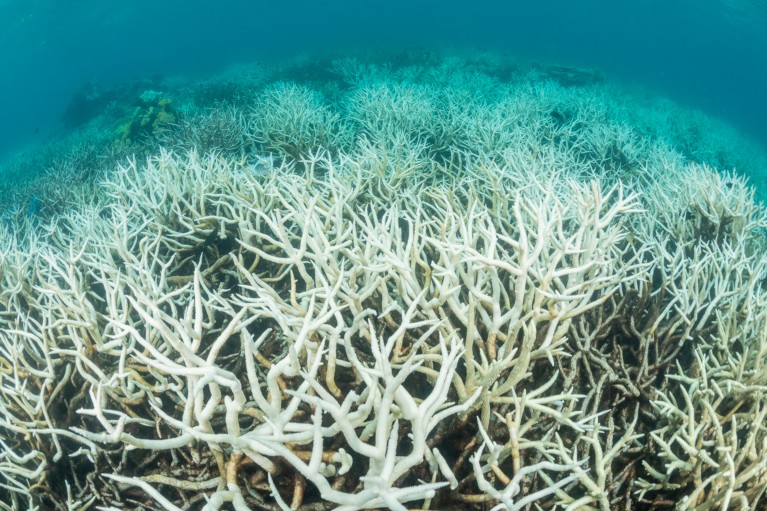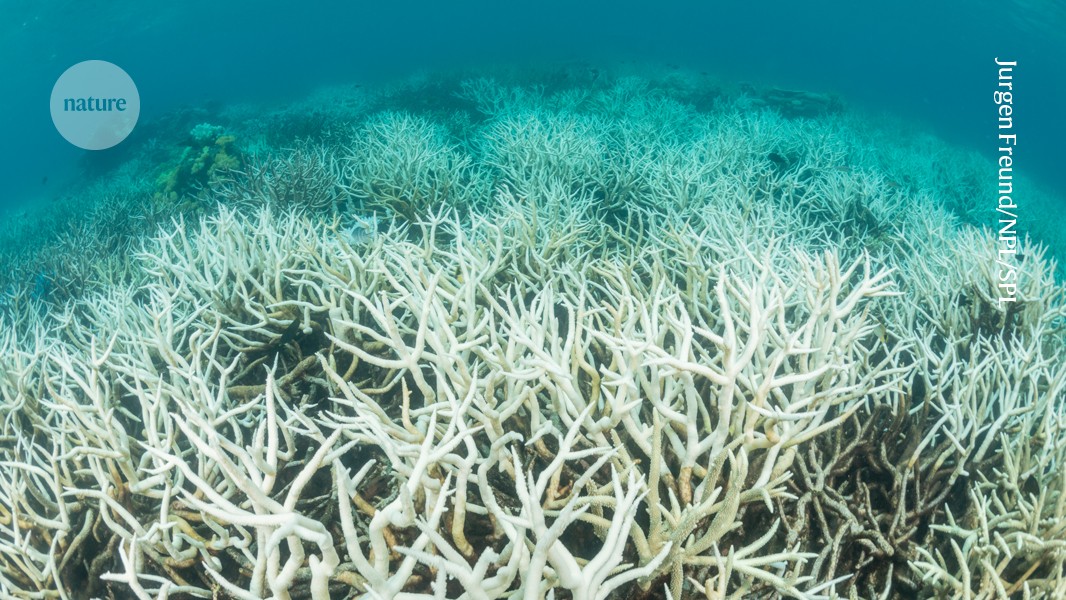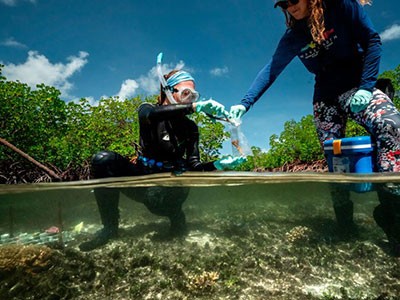
Marine heatwaves are increasingly bleaching corals in the Great Barrier Reef off of Australia.Credit: Jurgen Freund/Nature Picture Library/Science Photo Library
Earlier this year, Australia’s Great Barrier Reef cooked at temperatures higher than any it has experienced in at least four centuries, according to climate researchers. The finding — which they published today in Nature1 and attribute to human-induced climate change — comes as scientists rush to understand the impacts of the most intense and extensive coral-bleaching event ever recorded for the 2,300-kilometre reef system.
Australia’s Great Barrier Reef is ‘transforming’ because of repeated coral bleaching
“We now have a long-term record that shows just how extreme these recent events are,” says Ben Henley, a climate scientist at the University of Melbourne in Australia and lead author of the Nature study. Henley and his colleagues determined past ocean temperatures at the Great Barrier Reef by drilling and chemically analysing coral skeleton cores at 22 locations across the massive reef system.
Corals usually ‘bleach’ when they are stressed by high temperatures: they expel the colourful algae that live inside them and provide them with energy through photosynthesis. Depending on the severity and duration of the bleaching event, the corals might recover, or they might die, threatening the biodiverse ecosystems that provide habitat for fisheries, attract tourists and protect coastlines from storms.
The trend uncovered in the latest study is clear: around the turn of the nineteenth century, after industrialization began, ocean temperatures at the reef began to rise steadily. And in the past two decades, temperatures have spiked, with five of the six warmest years in the 407-year ocean record occurring since 2016 and corresponding to major bleaching events.
Impacts uncertain
The study arrives at nearly the same time as the Australian Institute of Marine Science (AIMS) in Townsville issues its latest report on the state of the Great Barrier Reef, including data from both aerial and underwater surveys of corals conducted since a massive bleaching event earlier this year. That analysis, released on 7 August, includes some encouraging news: many areas of the reef have bounced back since 2016, when a major bleaching event led to widespread coral mortality.
But researchers caution that the impacts of this year’s mass bleaching event aren’t completely captured in the report and that scientists might not get a full picture of the coral mortality for another 6–9 months. Around 30–50% of the reefs surveyed from the air are still at risk, says Neal Cantin, a coral biologist at AIMS, who helped to lead the surveys.
“Corals can stay bleached for some time and still survive, so we won’t know the full impact until we are through the recovery phase,” Cantin says. “But if we continue to see this level of accelerated warming and more frequent bleaching, that recovery process is going to degrade pretty quickly.”
Hot water
The latest Nature study focuses on annual temperatures from January through March, when ocean temperatures at the reef are at their peak. This year, according to the new coral-skeleton record, the Coral Sea’s surface temperature during this period reached an average of 1.73 °C above the 1618–1899 average. Henley and his colleagues modelled Earth’s climate both with and without historical greenhouse-gas emissions and determined that the ocean warming trend in their record would not have been possible without human activity.
‘Ecological grief’ grips scientists witnessing Great Barrier Reef’s decline
The researchers think that the evidence might eventually force the United Nations cultural organization UNESCO to reconsider its decision this year not to include the Great Barrier Reef on the list of endangered World Heritage sites.
The study results are worrisome, “but not surprising”, says Robert Streit, a reef ecologist at the University of Melbourne. The Australian government has laid out a plan to invest billions of dollars into efforts to conserve the reef and to help corals adapt to warmer waters, but Streit wonders whether this will be enough to stay ahead of the destruction caused by global warming. “Are we creating false hope that science can solve these problems?”
Henley says it’s clear that the reef will not survive in its current form if temperatures continue to rise, and this raises crucial questions about what will remain in the decades to come. “I think it’s likely that the Great Barrier Reef will be a very different place in 20–30 years,” he says.




